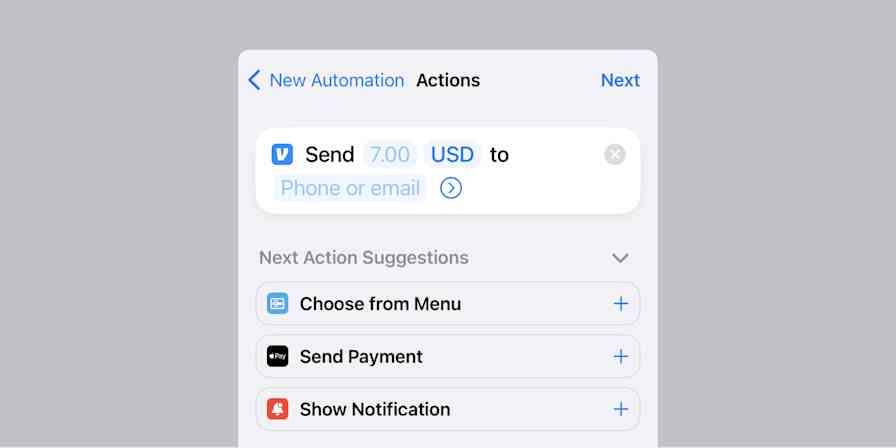Legend has it that in the summer of 1994, as the production of Toy Story was wrapping up, four Pixar creatives went to lunch to brainstorm ideas for new projects. Sketching on napkins, they teased out ideas for what would become Wall-E; Monsters, Inc.; A Bug’s Life; and Finding Nemo.
It’s inspiring that such massively successful blockbusters started on napkins, but that’s the first step for any good idea, right? Getting ideas out of your head and putting it into the world in some tangible way is how you turn them into reality.
Most people don’t sketch the next great animated movie characters on napkins, but we all need a way to tease out our ideas, think through concepts, and put them into a usable format. That's essential for creativity, in our personal lives and in business. Lists, outlines, and notes can help, but they don’t always lend themselves to radical innovation, learning, or problem-solving.
There’s a better way: mind maps.
What Are Mind Maps?
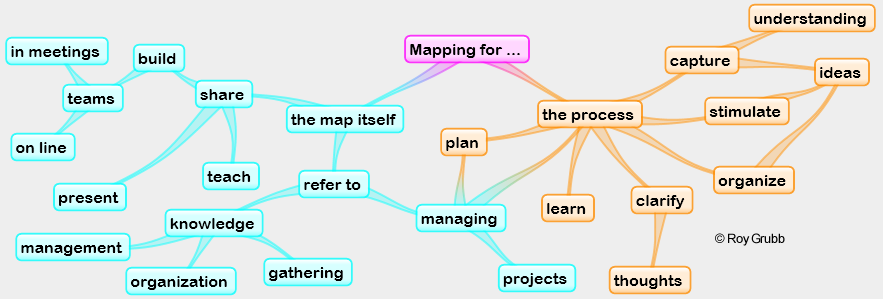
Mind maps are a visual way to organize your thoughts around one topic using words, colors, images and numbers to highlight ideas and draw connections. Invented by Tony Buzan in the 1960s, mind mapping is much more than drawing: It’s a framework to help you fully think through ideas, and show how topics and ideas are connected and allowing with more flexibility than an outline or list affords.
Mind mapping can be a solo or team activity, and they can be used for all types of tasks: learning, thinking through ideas, strategic planning, mapping out processes or organizing overwhelming amounts of information. I’ve even come across mind maps made to plan weddings or organize Thanksgiving dinner.
Roy Grubb, Managing Director at G&A Management Consultants Ltd and creator of the Visual Thinking Center, told me mind maps are of two types: "Maps where the benefit is mainly in the process of making the map, the thinking process, the memory jogging, the stimulation of new ideas and associations; and maps where the benefit is the map as a reference and communication point."
Why Use Mind Maps Instead of Lists or Outlines?
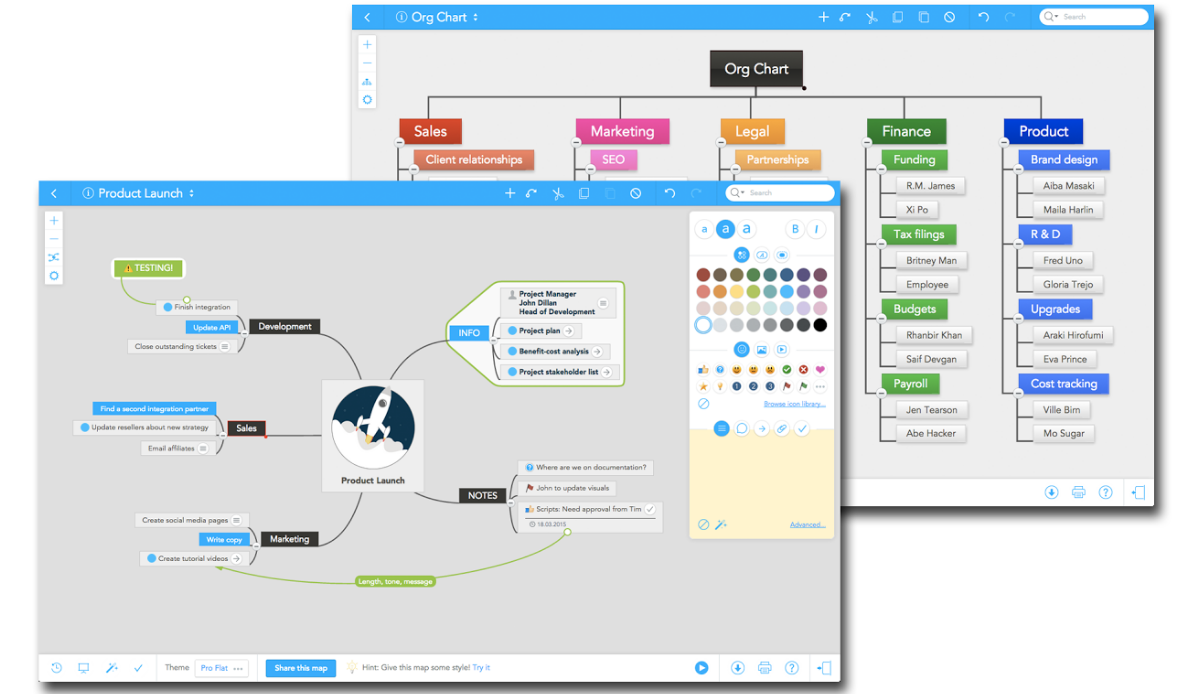
You don't have to make a mind map—you could just jot a note down on that napkin, or use an outlining app to list the things you're thinking about. So why mind maps?
"Lists always get long, and they assign importance in terms of where the item is on the list," explained MeisterLabs co-founder Michael Hollauf. "If something is further down, it’s inherently less important. If you have topics that are on a similar level, it’s hard to show that in a list. Mind maps can reorganize really easily if you decide something belongs to something else."
In other words, instead of capturing information linearly by default, mind maps can show--and help you discover--connections between different topics, the way your mind works.
List or outlines can be great for small tasks, but Grubb told me fresh ideas are more likely to pop up when creating a mind map because of the free format. "When I’m planning a project, a mind map helps me capture my ideas without having to lay out steps in a linear fashion. I find that a linear list, or even an outline, hems me in and stops me thinking freely."
How to make a mind map
Mind maps are pretty simple to create, and you can build them on a whiteboard, sketch them on a piece of paper, or use a mind mapping app to create them. These basic steps apply in any medium:
1. Start in the Middle With a Central Idea

This can be a word or an image/picture that represents the central topic you’re going to map.
2. Create Branches to Represent Sub-topics
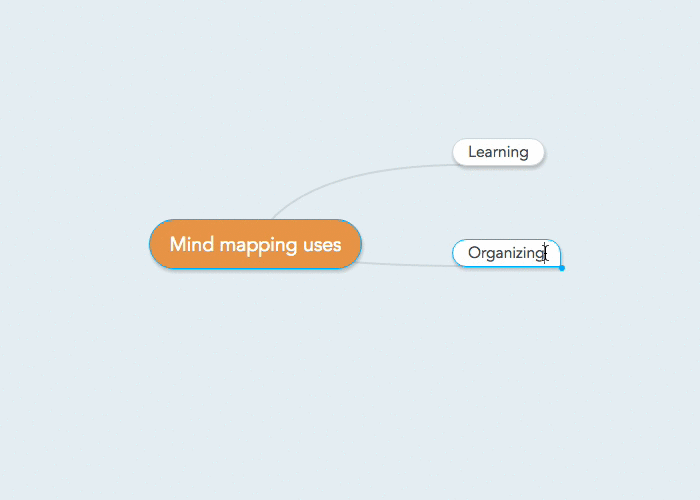
These should be limited to words or short phrases. Keep a good amount of space between your ideas to leave room to add on later.
3. Add Details to Your Mind Map

You can vary colors, word cases, font styles, and even the thickness of your branch lines to separate or group different topics or ideas. Or, you can add photos, notes, and more to add more detail to your map.
4. Make Connections
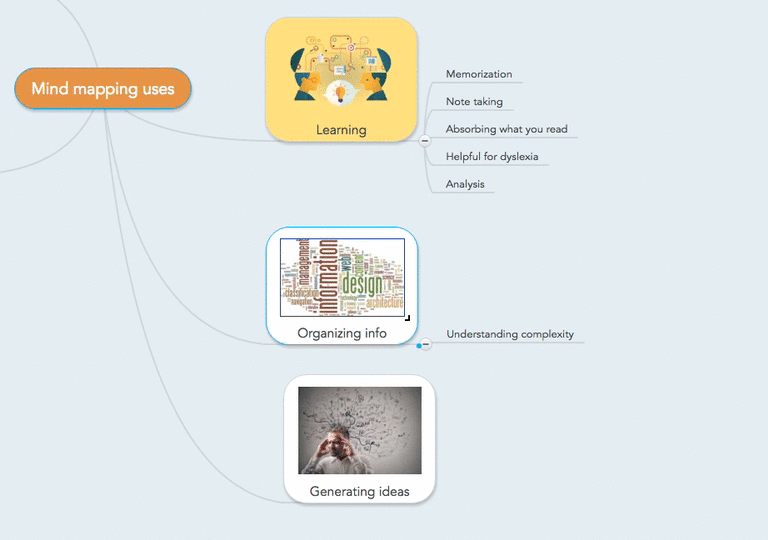
You can draw lines or arrows between ideas in the map that you want to connect.
Keep expanding for as long as you need to. You might feel done with your map after one sitting, but it could also be something you keep and adjust or add to over time.
Other Mind Mapping Tips
If you’re a beginner
For mind mapping beginners, it can be helpful to have a pro guide your first few maps.
"Look for someone who often uses mind maps and ask their opinion," Grubb told me. "This can help to remove blocks to mastering the technique in the early days."
If you’re not artistically inclined
Don’t worry if you’re not an artist; that’s not the point of a mind map.
"One of the things we hear often is ‘I can’t draw,’" says Raphaela Brandner, marketing manager at MeisterLabs, creators of mind-mapping tool MindMeister. "It’s not about making it beautiful, it’s about making it memorable."
You don’t need to make a masterpiece: "They’re thinking tools, not works of art," Grubb says.
If you’re mapping with your team
When mapping with others, it helps to set some ground rules first. "What we do here is we come to some fort of agreement for how the map is going to be used," Brandner says. "We say we’ll ‘add comments here’ or ‘use these icons for this.’"
With technical teams, Grubb opts for mind mapping software on a laptop with the map projected onto a screen. For teams who are new to mind maps, he maps on large sheets of paper or a whiteboard.
"It helps to be in front of the map, talking as I add to it while the ideas bounce back and forth," he says. "I can explain what I’m doing as we go along, and at the end, capture images of the maps on a phone before erasing them."
As the meeting progresses, Grubb gets people more involved: "I look for opportunities to hand over the marker so that everyone has ownership of the mind map."
If you’re working remotely
Mind mapping tools make it easy for distributed teams make maps together.
"When working with others who may be in distant offices, online mind mapping services, like MindMeister or Mindmup, are indispensable," Grubb says. "Several people can work on a map simultaneously and they can chat online or in the app. Both MindMeister and Mindmup have project planning capabilities, allowing dates and resources to be added to individual items."
Other mind mapping tools include Mindjet, Coggle, XMind, FreeMind and MindNode.
When to Use Mind Maps
Mind maps are often used in schools, so people tend to associate them mainly with learning and studying. But there are a ton of business applications for mind maps, too.
"Many students are shown how to make mind maps to help with learning but never take the skill on into their business careers," Grubb says. "Those that do find they have a tool that is good for much more than just understanding school work."
Grubb told me he sees businesses using mind maps for ideation, product design, website design, project planning, management, report writing, and planning software testing.
Here are just a few business-focused tasks mind maps can help with:
When Absorbing What You Read

Reading is an important way to grow as a professional, but with busy schedules, it can be hard to digest a book or resource enough to apply it to your work.
Mind maps can help you truly absorb what you read. For example, Grubb used a MindMap to summarize the book Made to Stick by Chip and Dan Heath. First, he read the book and highlighted words and phrases that caught his attention. When he was done reading, he went back and made a mind map from the highlighted sections and was able to use that mind map to successfully guide his next project.
Learn how to read more, faster, with our guide to reading 50 books each year.
When Preparing for a Speech or Presentation
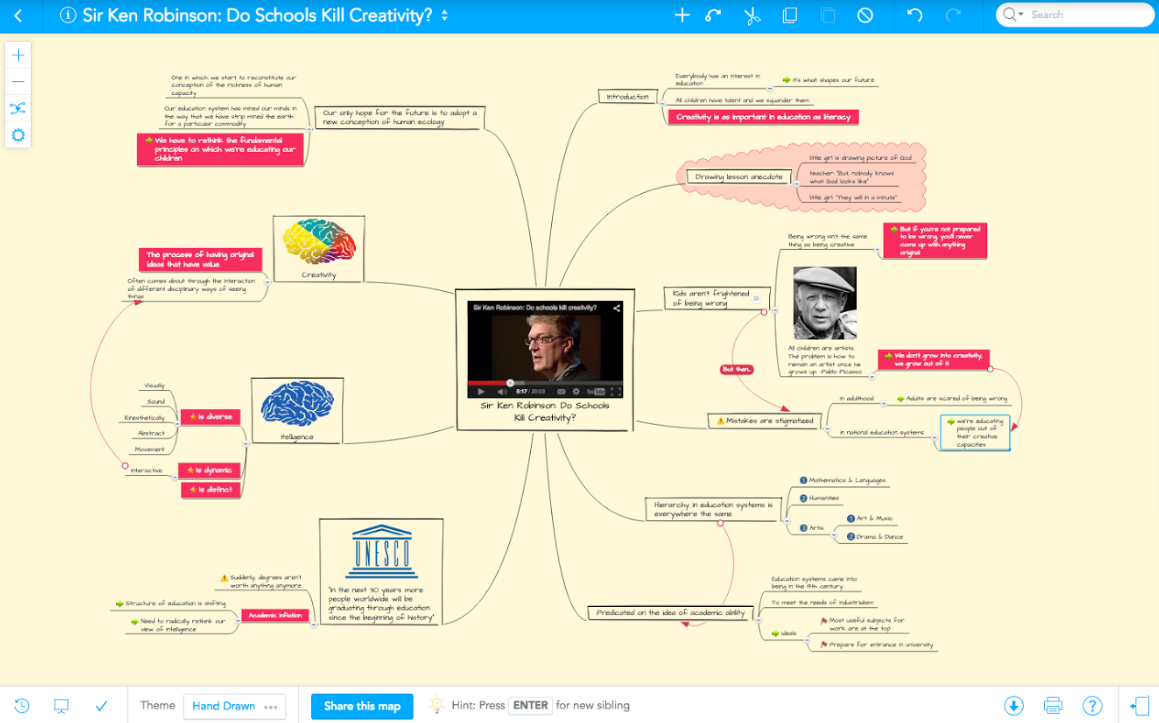
Students turn to mind maps—especially hand-written maps—when studying because they help with memorization.
"That tactile experience works a lot better for memorizing," Brandner says. "That’s what I did in school. Once you have mind map and you’re about to go into the exam, you redraw the mind map by hand to get it into your brain."
You could use a similar process to prepare for a speech or presentation. You’ll feel more confident about the content and might not have to rely on notes as much during the presentation.
Need a presentation app? Check out our roundup of the 20 best PowerPoint alternatives
When Managing a Project
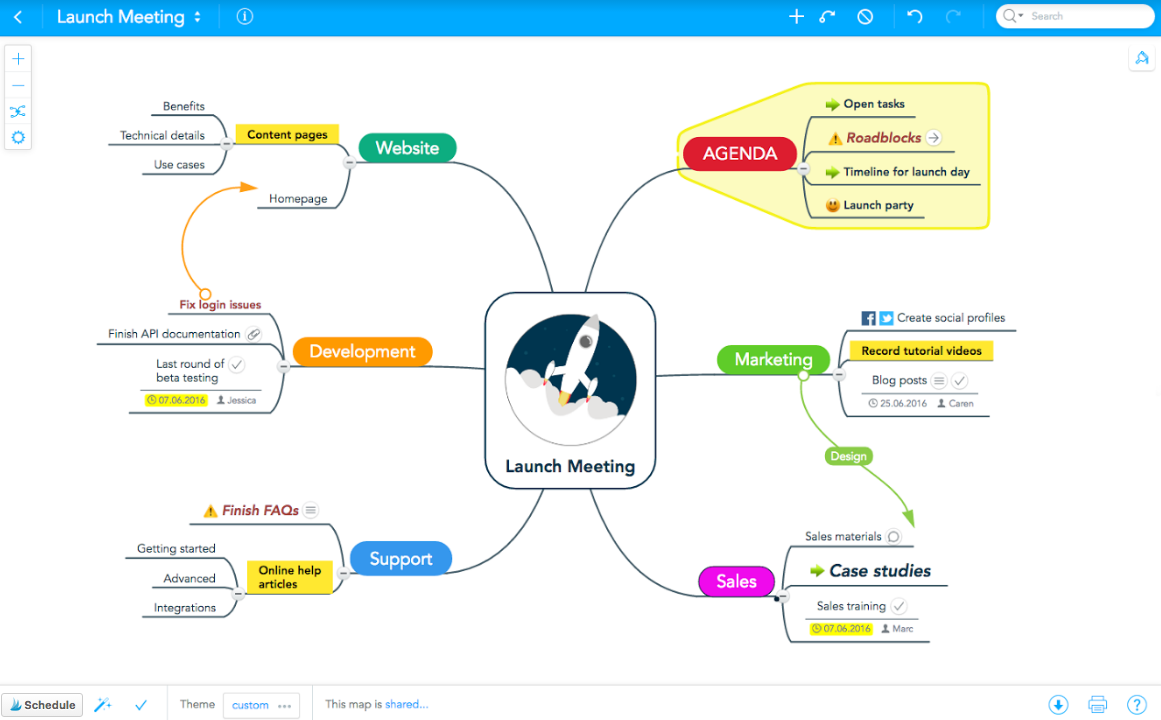
Some project managers use mind maps to take notes in meetings. Instead of pages of linear notes, you can put the meeting topic in the middle and create branches for each major sub-topic discussed.
"When I do this, it’s amazing to me how I see things differently," writes business analyst and marketer Tim Walker. "I pay more attention during the meeting, and I leave with a much better idea of what I could do next to move the work forward."
Making mind maps can also help prioritize project tasks.
"When you map things radially, you take away the rank order and chronology that’s inherent in an outline or Gantt chart," Walker writes. "Instead of prematurely worrying about which part of your project comes first in sequence, or which part deserves the most resources, you can focus on getting the right issues surfaced in a way that promotes dialogue, understanding, and problem-solving"
Learn how to effectively manage projects—and find the tools you need to help you out—with Zapier's Ultimate Guide to Project Management.
When Trying to Generate New Ideas
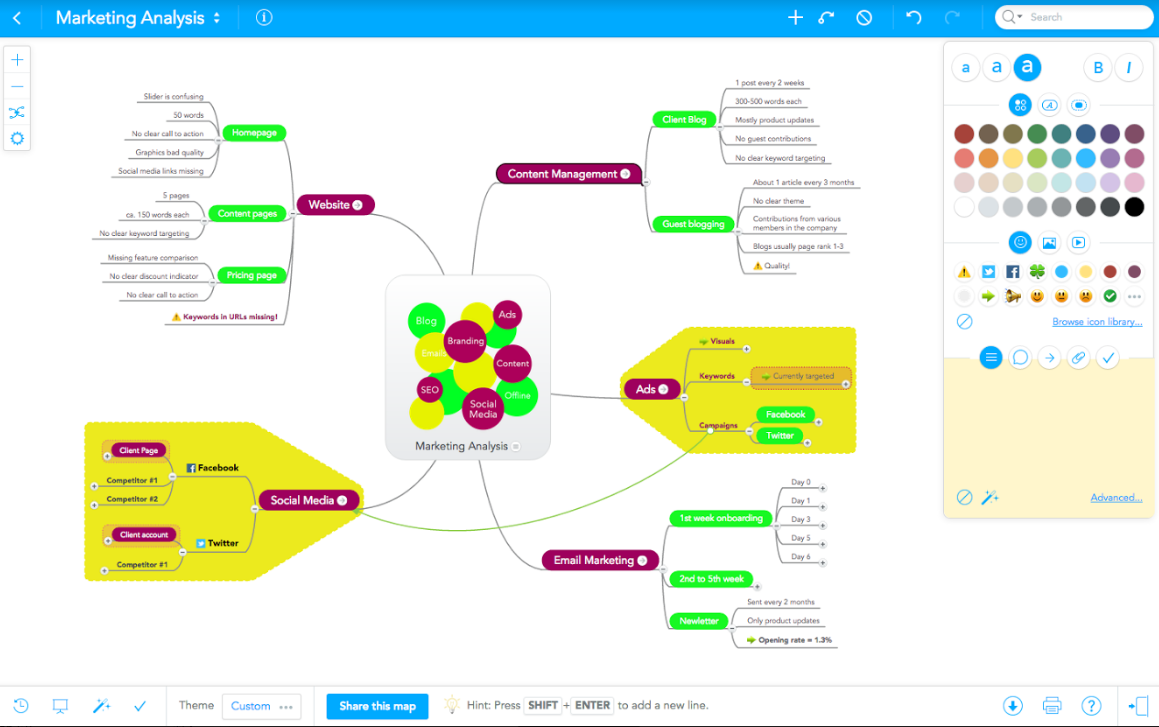
Use mind maps to combat writer's’ block, think up new product ideas, or generate possible solutions to a problem you’re facing.
"Generating a starting point for innovation can be one of the most productive uses of mapping," Grubb writes. "Ideas can tumble out of control. Writing them in a list easily kills the inspiration, but organizing them in a mind map not only gives the freedom to wander ‘all over the map,’ but encourages grouping, thus often bringing ideas together that give birth to new thoughts."
For more ways to spark new ideas, check out GV's design sprints which help Google's teams turn moonshots into reality.
Automate Your Mind Maps
Your mind maps can be put to even more use if you connect your content in them with your favorite apps. With Zapier, an app automation tool, you can send tasks or topics from MindManager Enterprise to many other apps, such as Google Docs, Trello, Asana, and Evernote.
For example:
See other MindManager Enterprise app integrations or create your own.
Who knows, maybe you are planning to pitch an idea to Pixar for Hollywood’s next loveable robot, clown fish, or furry monster. If so, ditch the napkins, and try a mind map.
And the next time you want to make sense of information, successfully plan a big project, run a meeting, learn something new, streamline the way you work or even plan Thanksgiving, mind maps can work for you, too.
Mind Map Examples and Further reading
Still want to use notes or outlines to organize your thoughts? Check out our roundups of the best notes software and outlining apps to find the tools you need.
Mind Map photo by INPIVIC Family via Flickr. Mind map example by Roy Grubb. Mind map screenshots via MindMeister.



